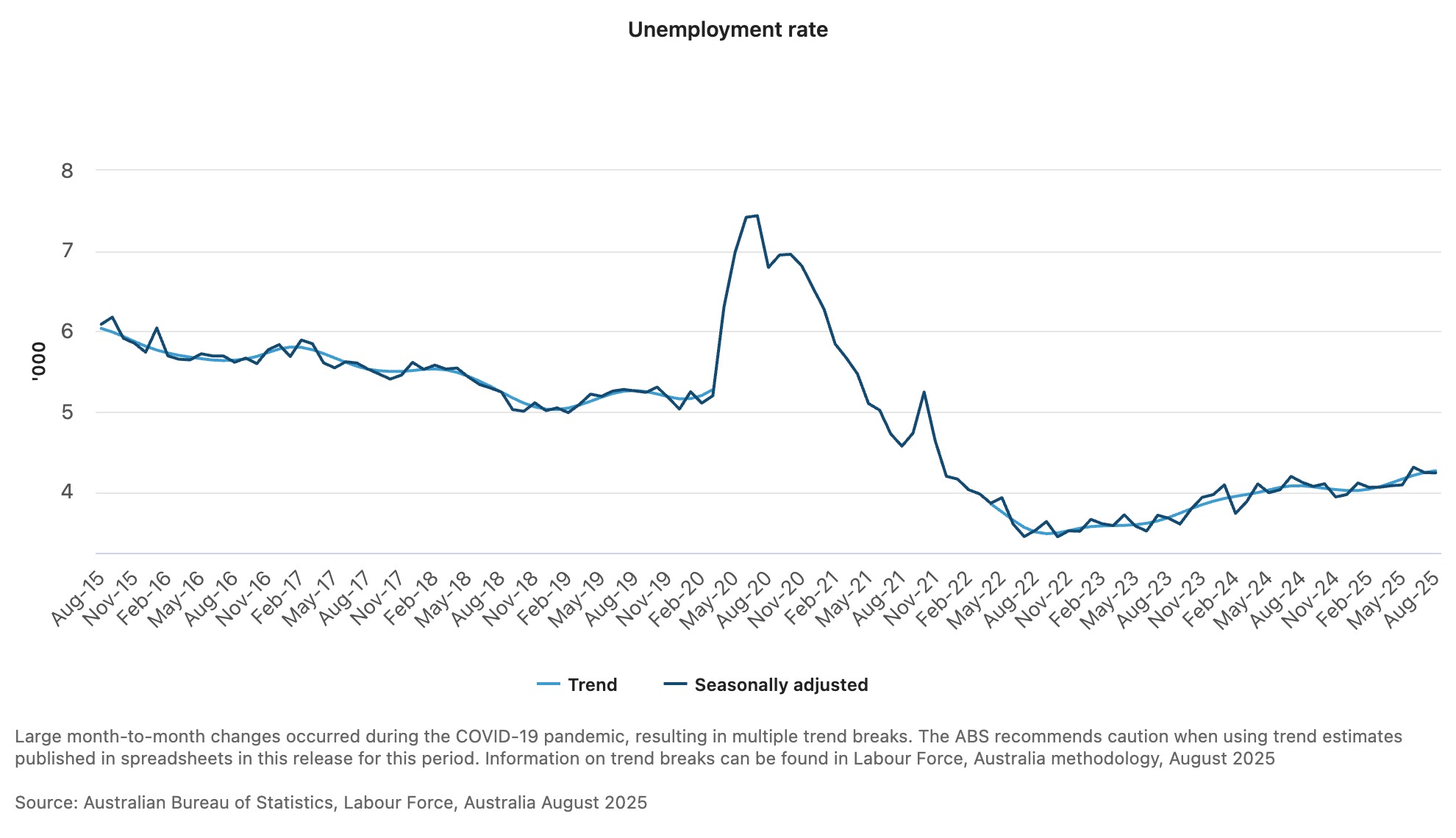
The latest ABS labour market figures are in, and August delivered mixed results for Australia’s labour market with a suggestion that employment is stagnating. Overall employment dipped slightly, down 5,400 with the participation rate nudged down to 66.8%, keeping the unemployment rate steady at 4.2%.
Full-time work took a hit after July’s big gains, dropping by 40,900 to 10.08 million. On the flip side, part-time roles bounced back, adding 35,500 after falling in July.
Looking at the bigger picture, job growth has slowed. Between March and August this year, only 59,000 new roles were created (most of them full-time) which is well down on the 98,000 jobs added in the same period last year.
Around the country, South Australia posted the highest unemployment rate at 4.9%, while Tasmania held the lowest at just 3.2%. The ACT saw the sharpest shift, climbing from 3.9% in July to 4.7% in August.
So, what does this mean? Employers are still hiring, but growth is softer than last year — which for employers, makes attracting the right talent more important than ever.
Here are the Key Statistics from the ABS report, alternatively, you can view the full survey results here: Labour Market Update.
Key statistics
In trend terms, in August 2025:
unemployment rate increased to 4.3%.
participation rate remained at 66.9%.
employment increased to 14,643,000.
employment to population ratio remained at 64.1%.
underemployment rate remained at 5.8%.
monthly hours worked increased to 1,985 million.
In seasonally adjusted terms, in August 2025:
unemployment rate remained at 4.2%.
participation rate decreased to 66.8%.
employment decreased to 14,626,500.
employment to population ratio decreased to 64.0%.
underemployment rate decreased to 5.7%.
monthly hours worked decreased to 1,977 million.
full-time employment decreased by 40,900 to 10,077,300 people.
part-time employment increased by 35,500 to 4,549,200 people.
What The Figures Suggest:
Labour Market Weakening:
The overall drop in employment and the fall in the participation rate and employment-to-population ratio signal a softening in the labour market.
Shift to Part-Time Work:
While overall employment fell, part-time employment increased, indicating a trend shift, potentially due to increased economic uncertainty or a return to part-time work.
Easing Vacancy Rates:
The decrease in job vacancies suggests that the previous tightness in the labour market is easing, with fewer businesses actively looking to hire.
Steady but Vulnerable:
The steady unemployment rate offers some stability, but the decrease in employment and the dip in the participation rate point to potential underlying weakness and a move away from the high levels of labour market participation seen previously.

